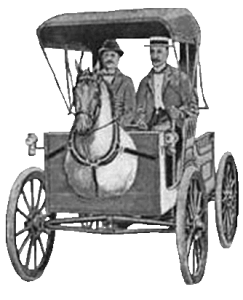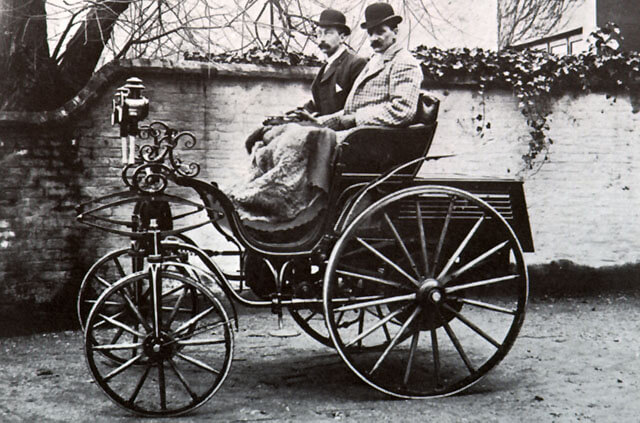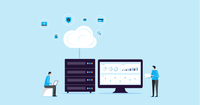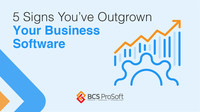 In the latter years of the 19th century a revolutionary new technology was introduced, and, like the internet, it would eventually disrupt the economy and the culture. This was the horseless carriage. Unlike today’s cars, this machine looked identical to an actual carriage. It just didn’t require a horse. The public thought it was the work of the devil and shunned it. Growing up with horses on every corner was comforting, whereas a carriage drawing itself down the road was upsetting. One horseless carriage designer decided to meet them halfway.
In the latter years of the 19th century a revolutionary new technology was introduced, and, like the internet, it would eventually disrupt the economy and the culture. This was the horseless carriage. Unlike today’s cars, this machine looked identical to an actual carriage. It just didn’t require a horse. The public thought it was the work of the devil and shunned it. Growing up with horses on every corner was comforting, whereas a carriage drawing itself down the road was upsetting. One horseless carriage designer decided to meet them halfway.
 He placed a fake horse head on the front of his horseless carriage—a horsey horseless carriage indeed!
He placed a fake horse head on the front of his horseless carriage—a horsey horseless carriage indeed!
And this worked for most. But for others, they wanted to hold on to the old ways, no matter how much more efficient the automobiles could be.
Today, we forget how much effort and energy and money goes into keeping horses alive and healthy. That’s because most of us don’t own horses. We don’t have to buy barns to protect them; we don’t have to pay someone full-time to maintain the barn, pick up the manure, and make sure the horses are fed. And of course we don’t have to pay all the veterinary bills.
Business systems today are like the horseless carriage. We are aware of an alternative, but we aren’t certain how to make that change ourselves. For instance, imagine owning the barn, horseshoes, saddles—not to mention the horses—and then realizing it’s all vanishing. It’s not scary; it’s daunting. Technology changes and the transition can be difficult
On-premise or “legacy” ERP was designed during the age of fax machines and yellow pages. Today, we can take a picture with our phones and fax it via an app such as faxfile, and we can promote our business via social media platforms such as LinkedIn.
There is no need for a fake horse head to make us feel better about a new technology. What we need is a simple understanding of the pros and cons for us. Rather than avoiding these, let’s look at how to leverage them into positive business growth.
Here is just one danger to maintaining legacy ERP software in the face of a more efficient alternative.
The IT Budget Drain Leaves No Room for Innovation
Current on-premise ERP software is extremely helpful. It would not be fun to do Accounts Payable by hand. Most business transactions—from a customer placing an order, to accountants posting the transaction to the general ledger, to finance managers verifying the accuracy of the numbers, to executives reviewing financial reports—have been automated by software. When these programs were initially implemented, life became easier and businesses grew. Time that was spent manually inputting information was freed to spend on other activities.
As a company continues to grow and new technologies are introduced some new problems arise. To solve these, employees must create workarounds with spreadsheets, and IT teams must develop customizations. Fast forward a few more years and these very customizations may require yet more workarounds. Gradually, a business’s ERP becomes hardened like plaque. Worse, it resists change. When a business upgrades on-premise technology, they must re-implement and then test those changes, integrations, workflows and reports.
This is called Version-Lock. It is a similar problem faced by the individuals who had difficulties transitioning to the horseless carriage. Mostly this difficulty was caused by their large investment in the horse, the barn, and all related maintenance fees.
But when your competitors are making deliveries with automobiles and you are still driving a horse and buggy, you’re at a huge disadvantage.
Systems like Sage 100 (formerly MAS 90/200) and Sage MAS 500 are still absolutely among the best in their class. The difference between using QuickBooks Enterprise and Sage 100 is night and day. However, these systems were still designed before the idea that the internet would be a household commodity was even conceptualized. There’s far less R&D going into on-premise systems than there is going into the cloud and SaaS technologies. That’s what we ultimately want, and that’s where business is going whether you want it to or not.
Stop Maintaining and Start Innovating
Below is an exercise that will help you think differently about the pros and cons of new ERP software. First brainstorm how much of your IT’s time is spent maintaining systems required for day-to-day operations such as system upgrades, patches, fixes and support calls. If you’re like most companies, this consumes at least 90% of your budget. Next ask yourself:
How much IT budget is spent innovating technology and addressing new business opportunities?
For instance, how much is spent on implementing that new ecommerce store you’ve been kicking around at meetings? Have you never considered an ecommerce or vendor portal of some sort just because you don’t currently have the capability to support it?
Lastly, try the following thought experiment.
If 100% of the company’s IT budget could be focused on new business opportunities, what would you have it focused on? Be as specific as possible.
Case Study: Shaw Carpets
Here’s how Shaw Carpets—a $4.5 billion manufacturer of flooring and turf products for commercial, residential and institutional markets—leveraged a new online software program to achieve stellar results.
In 2013 Shaw was looking to expand into China, by building new manufacturing plants. They created new subsidiaries in order to do business in that region of the world, so they required a new ERP solution to ensure proper accounting practices. Unfortunately, their aging ERP system was “Version-locked.” Their time was being spent on maintenance for their customizations, and even a minor software update to their on-premise account would eviscerate their work. Shaw was faced with a choice; They could redesign their customization every time they did an upgrade. Or, they could stay with outdated software releases.
Their main requirement was to find a platform that guaranteed their customizations would work with every new release. This, while not killing their IT resources.
Shaw decided to purchase Netsuite ERP, which allowed rapid deployment across all 11 subsidiaries without any upfront capital. More importantly, they have been able to take advantage of all the latest functionality, which Netsuite offers every six months. And, they don’t need to worry about customizations.
Every company is unique and every company requires a unique solution. Shaw and partners were able to develop their own solution, where they found great success in growing their company by freeing up personnel to focus on new business operations.
And they didn’t even need a fake horse head.
Final Thoughts
You may be thinking, “My company just did $20 million in sales last year. I don’t have anything in common with the world’s largest carpet manufacturer.” To quote Larry Bossidy & Ram Charan from their New York Times best selling book, “Execution: The Discipline of Getting Things Done”:
“You can learn something from anybody and anytime.”
Take note of what high performing organizations are doing to dominate their industries. It doesn’t matter whether you want to be the #1 distributor of gaskets and pipe fittings in your state or the top supplier of packed peanuts in your zip code. There are lessons to be learned from companies your respect and business priorities you need to focus on to help you build the company you want to run.
Not sure what your business should be focusing on? BCS ProSoft has been working with small and mid-market companies for almost 30 years, so we have a pretty good handle on your priorities should be. Start a dialogue towards better business efficiency by requesting a complimentary, no-obligation introductory consultation from one of our ERP experts today.







